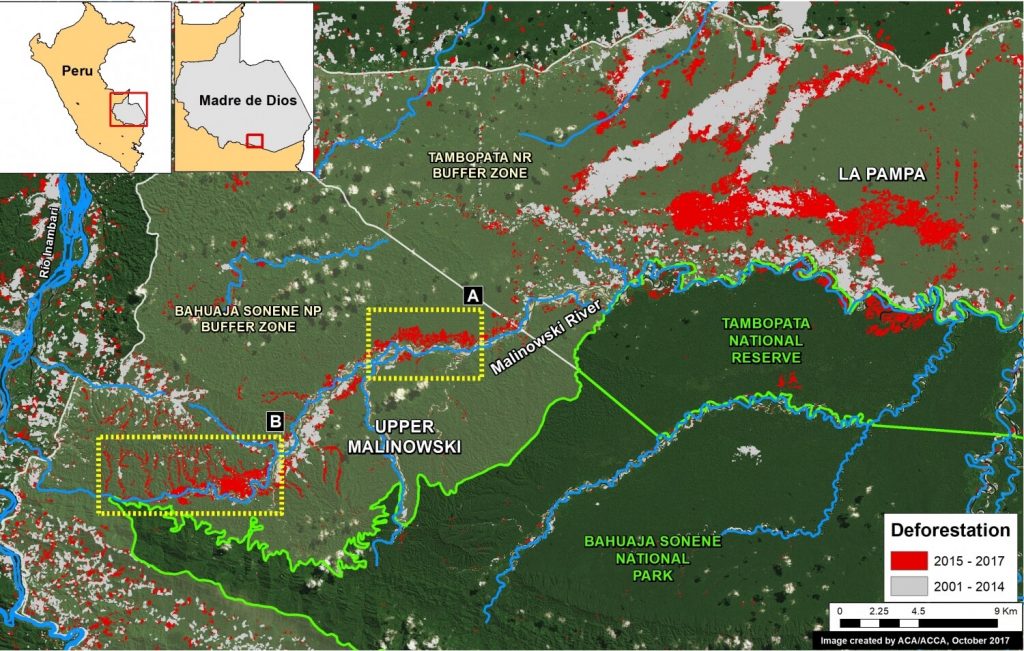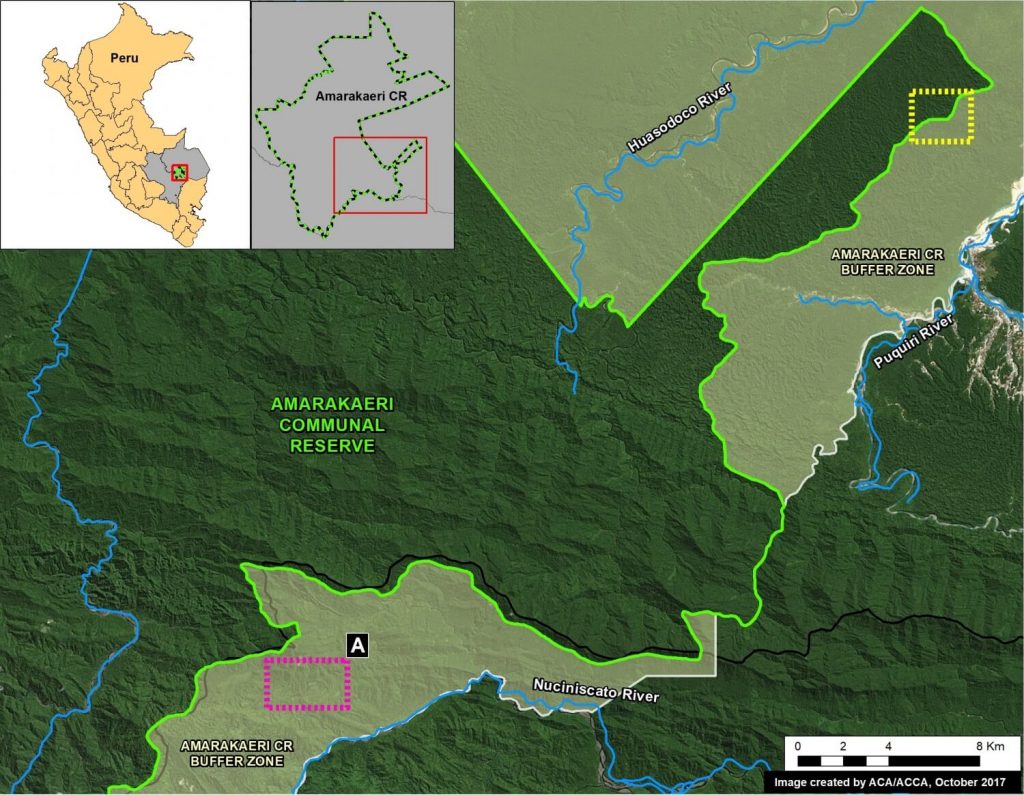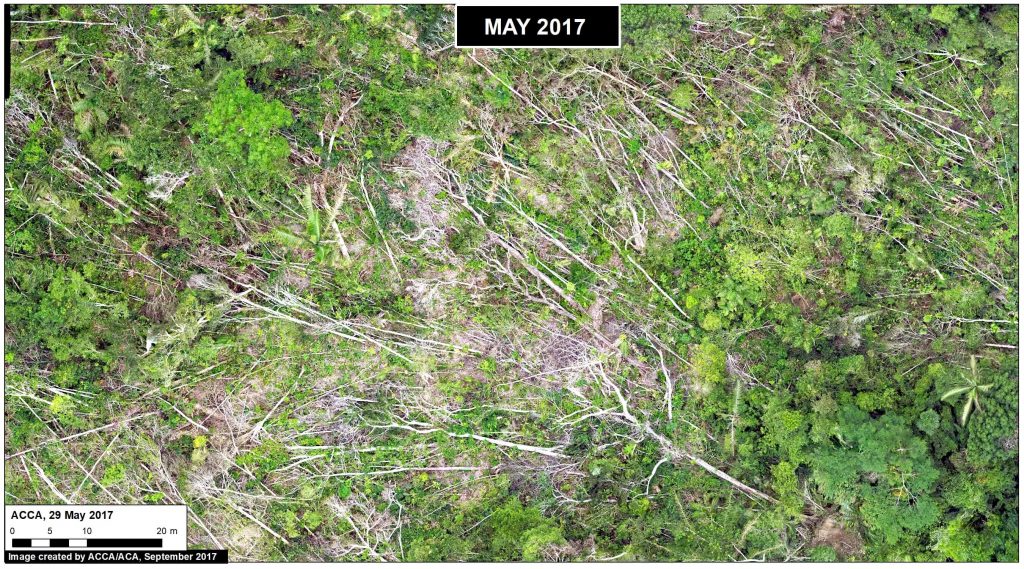Have you ever walked through a bamboo patch? If not, let me warn you about possible scratches, torn shirts or pants, and several up and downs you are certain to encounter. It doesn’t seem very promising -perhaps not for us- but for other species this habitat can be paradise. If you ever found yourself in a bamboo patch, stop and listen all the different birds’ calls or songs. In Los Amigos (LA), a “pip’ip’ip-pip’ip” call of tiny flammulated pygmy-tyrants, a “TEW tew-tew-tew’tew’tew’tu’tutu” song of white-lined antbirds (pictured on the right), or a “tr-tr-tr-tr-tr-TR-TR-TR-TR-TR” of the rare Peruvian recurvebill are just a few of the many birds inhabiting this particular thorny habitat.
There are several bamboo patches (“pacales”) of the genus Guadua spp., mostly within terra firme habitats in LA. Guadua bamboo patches occupy tree gaps, usually of 30-200 m in diameter -sometimes larger. They are highly dominant due to their massive seed production and their long vegetative growth phase, which allows them to colonize canopy gaps and often generate monodominant stands, causing mechanical damage to trees and saplings and altering the growth of understory trees. Compared to other types of monodominant habitats (i.e. Mauritia flexuosa palms), bamboo patches survive around 30 years after a short flowering event, followed by death over several square kilometers. Bamboo having a relatively short-term period of life could be detrimental for particular bird species that have found in bamboo habitats all what they need to flourish. Among monodominant habitats, bamboo patches harbor a higher diversity of specialized insectivorous birds.
But, what makes bamboo thickets so special? The wide array of food resources, from forest floor arthropods to a variety of insects colonizing bamboo internodes, culms, hollow stems etc.; and different vegetation structures (i.e. stems, leaf, and light intensity) are key habitat attributes that make bamboo patches a productive hotspot with highly specialized insectivorous birds. During the long bamboo vegetative phase these birds have plenty food resources, but questions arise when trying to understand what happens to these birds when the bamboo dies. Insectivorous bamboo specialists may experience population decline; move to different habitats or to another suitable bamboo patch. Considering current increased rates of habitat loss and fragmentation, the decrease of insectivorous bird richness in bamboo die-off should be particularly studied. The lack of suitable bamboo patches along with the spatial and temporal fluctuation of bamboo patches could increase the risk of extinction of this group of birds who have found in the bamboo its home.
For more references:
Areta, J. I. and Cockle, K. L. 2012. A theoretical framework for understanding the ecology and conservation of bamboo-specialist birds. Journal of Ornithology, 152 (Suppl 1): S163-S170.
Cockle, K. L. and Areta, J. I. 2013. Specialization on bamboo by Neotropical birds. The Condor 115(2): 217-220.
Lebbin, D. J. 2007. Habitat specialization among Amazonian birds: why are there so many Guadua bamboo specialists? Ph.D. dissertation, Cornell University, Ithaca, NY.
Lebbin, D. J. 2013. Nestedness and patch size of bamboo-specialist bird communities in southeastern Peru. Condor 115: 230–236.


 In the 2015 Global Big Day,
In the 2015 Global Big Day, 

